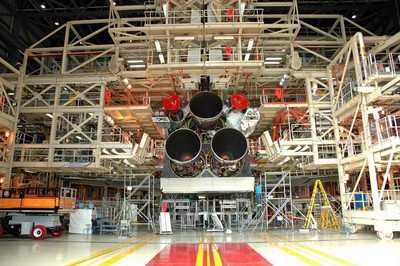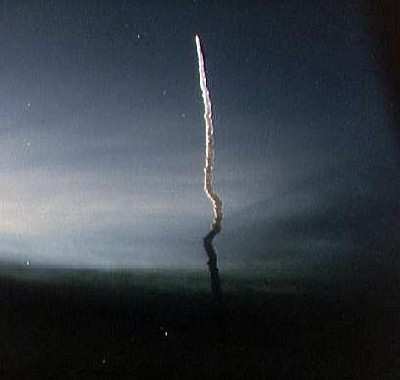Tue, Feb 22, 2005
New Damage Detection Sensors Not Ready To Fly
 More than two years of careful
investigation and painstaking planning may come down to the last
minute in NASA's attempt to return its remaining shuttle fleet to
service in May. Even though Discovery's launch date has been set,
not everything NASA pledged to the Columbia Accident Investigation
Board has come to fruition. In this case, the new sensors designed
to detect fatal hull breaches may not actually work until the very
last minute before launch.
More than two years of careful
investigation and painstaking planning may come down to the last
minute in NASA's attempt to return its remaining shuttle fleet to
service in May. Even though Discovery's launch date has been set,
not everything NASA pledged to the Columbia Accident Investigation
Board has come to fruition. In this case, the new sensors designed
to detect fatal hull breaches may not actually work until the very
last minute before launch.
"We expect that an army of engineers and scientists on the
ground will be working this (inspection) problem very hard right up
till the day of launch," said rookie astronaut Charles Camarda in
an interview with USA Today.
NASA Space Operations chief William Readdy, though not
specifically asked about the sensor issue, told USA Today he sees
no major roadblocks to the May 15th return to flight.

But USA Today reports there are a number of issues addressed by
the CAIB that are still in the works:
- Engineers will have to resolve what appears to be a major
miscalculation. In the wake of the hull breach that doomed
Columbia, NASA officials believed that, upon re-entry, the leading
edges on the shuttles' wings could withstand a crack wider than 0.2
inches. That's apparently not the case. Three weeks ago, according
to USA Today, engineers came to believe a crack less than one-tenth
of that width could be potentially fatal.
- A relatively inexperienced team of Boeing engineers monitoring
Columbia's final, tragic flight initially disregarded a
computerized damage projection based on data from the impact of
fuel tank foam on Columbia's wing. The projection indicated
the damage was fatal. But the Boeing engineers, many working on
their first live space mission, decided the projection was faulty.
The engineers took a lot of heat over their decision and NASA took
quite a bit as well, for accepting the Boeing report even though
parts were incomplete. More than two years later, the
computer projections still have not been independently
reviewed.
- Three months before Discovery's return to flight, there are
still no firm procedures for scanning the shuttle to detect damage
prior to re-entry. Astronauts haven't been able to train on damage
inspections.

"We're kind of taking these sensor systems to their limit, and
we need to understand what the limits are," Camarda told USA
Today.
More News
Option Approach An approach requested and conducted by a pilot which will result in either a touch-and-go, missed approach, low approach, stop-and-go, or full stop landing. Pilots >[...]
"Emirates is already the world's largest Boeing 777 operator, and we are expanding our commitment to the program today with additional orders for 65 Boeing 777-9s. This is a long-t>[...]
(Pilot) Reported That There Was A Sudden And Violent Vibration Throughout The Airplane That Lasted Several Seconds Analysis: The pilot was returning to his home airport at an altit>[...]
“This recognition was evident during the TBMOPA Annual Convention, where owners and operators clearly expressed their satisfaction with our focus on customer service, and enc>[...]
Overhead Maneuver A series of predetermined maneuvers prescribed for aircraft (often in formation) for entry into the visual flight rules (VFR) traffic pattern and to proceed to a >[...]
 ANN's Daily Aero-Term (11.19.25): Option Approach
ANN's Daily Aero-Term (11.19.25): Option Approach Aero-News: Quote of the Day (11.19.25)
Aero-News: Quote of the Day (11.19.25) NTSB Final Report: Sting Sport TL-2000
NTSB Final Report: Sting Sport TL-2000 Aero-News: Quote of the Day (11.20.25)
Aero-News: Quote of the Day (11.20.25) ANN's Daily Aero-Term (11.20.25): Overhead Maneuver
ANN's Daily Aero-Term (11.20.25): Overhead Maneuver





